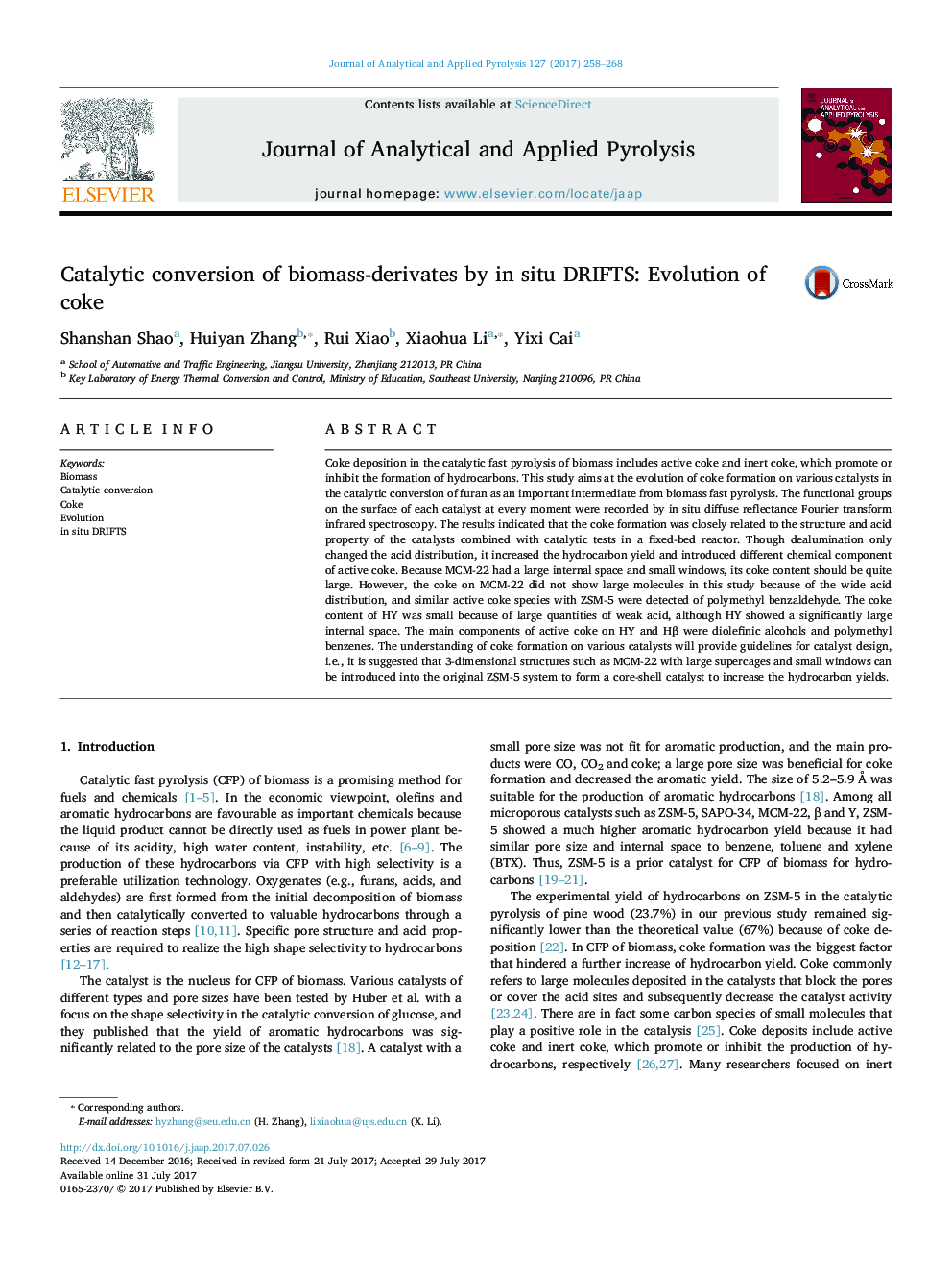| کد مقاله | کد نشریه | سال انتشار | مقاله انگلیسی | نسخه تمام متن |
|---|---|---|---|---|
| 5134441 | 1492950 | 2017 | 11 صفحه PDF | دانلود رایگان |

- Coke evolution in the pyrolysis of biomass-derivates was studied by in situ DRIFTS.
- Coke species were related to pore frammework and acid property of catalysts.
- Active coke over ZSM-5 was detected to be polymethyl benzaldehyde.
- MCM-22 with large cages & small windows showed similar active coke species with ZSM-5.
- It provides guidelines for catalyst structure design for higher yield of hydrocarbons.
Coke deposition in the catalytic fast pyrolysis of biomass includes active coke and inert coke, which promote or inhibit the formation of hydrocarbons. This study aims at the evolution of coke formation on various catalysts in the catalytic conversion of furan as an important intermediate from biomass fast pyrolysis. The functional groups on the surface of each catalyst at every moment were recorded by in situ diffuse reflectance Fourier transform infrared spectroscopy. The results indicated that the coke formation was closely related to the structure and acid property of the catalysts combined with catalytic tests in a fixed-bed reactor. Though dealumination only changed the acid distribution, it increased the hydrocarbon yield and introduced different chemical component of active coke. Because MCM-22 had a large internal space and small windows, its coke content should be quite large. However, the coke on MCM-22 did not show large molecules in this study because of the wide acid distribution, and similar active coke species with ZSM-5 were detected of polymethyl benzaldehyde. The coke content of HY was small because of large quantities of weak acid, although HY showed a significantly large internal space. The main components of active coke on HY and Hβ were diolefinic alcohols and polymethyl benzenes. The understanding of coke formation on various catalysts will provide guidelines for catalyst design, i.e., it is suggested that 3-dimensional structures such as MCM-22 with large supercages and small windows can be introduced into the original ZSM-5 system to form a core-shell catalyst to increase the hydrocarbon yields.
Journal: Journal of Analytical and Applied Pyrolysis - Volume 127, September 2017, Pages 258-268